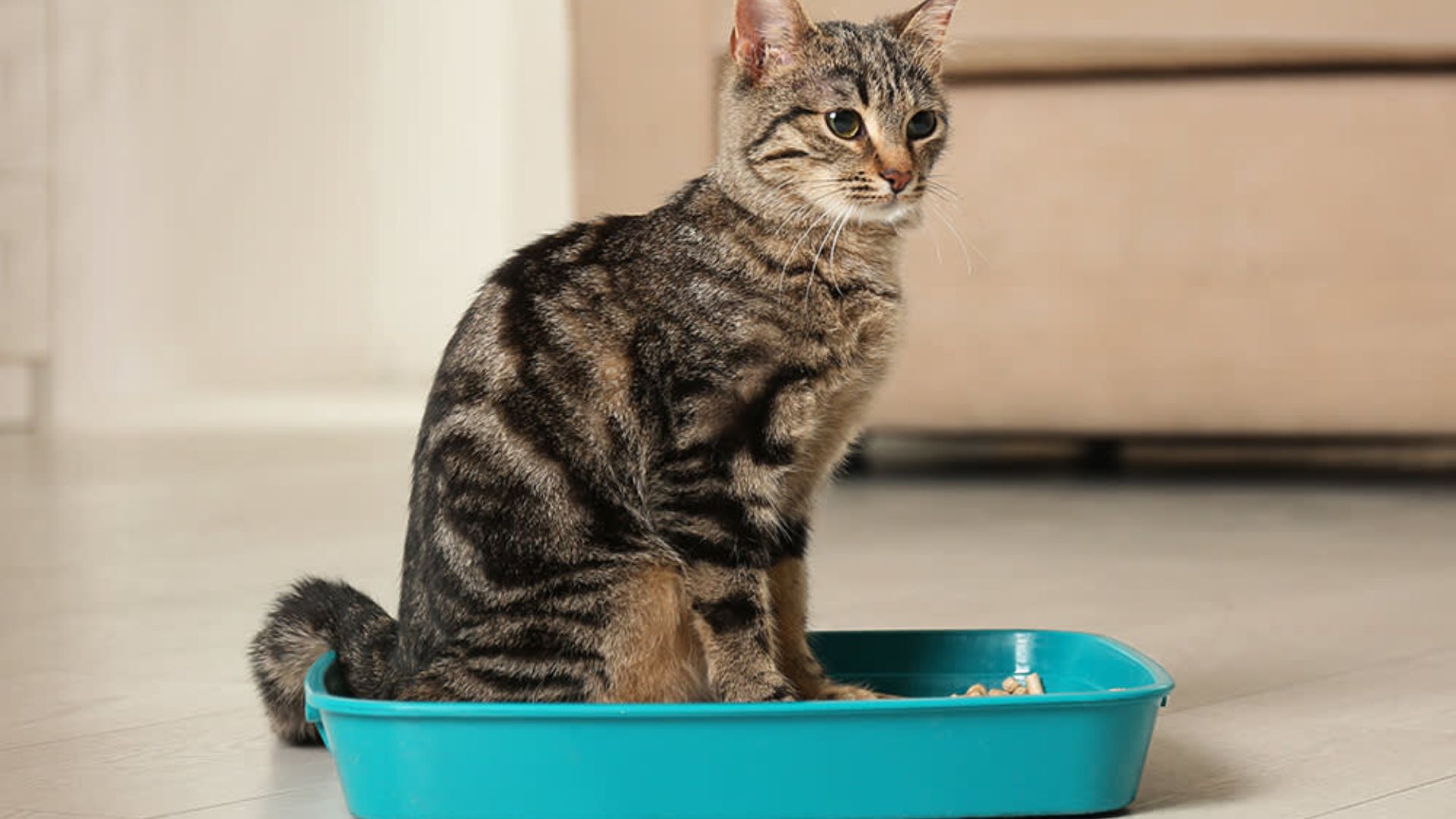
How do cats get worms ?
Table of Contents
Cats can get worms by accidentally ingesting the eggs of parasites. There are different types of worms that can affect cats, including roundworms, tapeworms, and hookworms. These worms can be transmitted to cats through various ways:
1. Roundworms: Cats can get roundworms by ingesting the eggs directly from a contaminated environment or by eating an infected intermediate host like a mouse or rat. Additionally, roundworms can be passed from mother cats to kittens through the milk she produces.
2. Tapeworms: Tapeworms are transmitted to cats when they ingest an intermediate host that has consumed tapeworm eggs. For example, cats can get tapeworms by ingesting fleas infected with tapeworm eggs while grooming themselves or by eating an infested bird or rodent.
3. Hookworms: Cats can contract hookworms by ingesting them directly, through larvae that penetrate their skin, or from their mother while still in utero. Hookworms attach themselves to the lining of the intestine and feed off the cat’s blood, potentially causing intestinal bleeding.
These worms can cause various health issues in cats, and it is essential to regularly treat and prevent worm infestations to ensure the well-being of your feline companion. Regular deworming treatments, good hygiene practices, and proper veterinary care can help prevent and eliminate worm infestations in cats.
Symptoms of worms in cats
The symptoms of worms in cats can vary depending on the type of worm infestation. Common signs and symptoms of worms in cats include:
1. Dehydration
2. Lack of energy
3. Weight loss
4. Anaemia (pale gums and lips)
5. Poor coat condition
6. Diarrhoea (may contain blood or worms)
7. Distended abdomen
8. Low blood pressure
9. Vomiting (could contain worms)
10. Death (in severe cases)
These symptoms can indicate a worm infestation in cats, and it is crucial to seek veterinary care if you notice any of these signs in your feline companion. Early detection and treatment are essential to ensure the health and well-being of your cat.
How often should cats be de-wormed
Cats can get worms through various ways, including ingesting infected rodents or fleas, consuming contaminated soil or food, or through the mother’s milk. The most common types of worms that affect cats are roundworms and tapeworms.
Symptoms of worm infestation in cats can include weight loss, diarrhoea, vomiting, and a swollen abdomen, although many cats show no visible signs of infection.
To prevent and treat worm infestations in cats, it is recommended to deworm them regularly. Kittens should be dewormed every 2 weeks from 3 weeks of age until 8 weeks of age, then monthly until 6 months of age. Adult cats should be dewormed every 1-3 months, depending on their exposure to potential sources of infection.
There are various types of deworming treatments available, including tablets, spot-ons, and pastes or granules. The most appropriate type of treatment will depend on the cat’s individual needs and the type of worms being targeted. It is important to consult with a veterinarian to determine the best deworming schedule and treatment for a particular cat.
In addition to deworming, it is also important to prevent flea infestations in cats, as fleas can transmit tapeworms. Regular flea prevention treatments can help reduce the risk of flea-borne infections and subsequent worm infestations.
Overall, regular deworming and flea prevention are essential components of a comprehensive cat healthcare plan, helping to ensure the health and well-being of the cat and preventing the transmission of worms to humans.
Common deworming medications for cats
Common deworming medications for cats include pyrantel pamoate, praziquantel, and selamectin. Pyrantel pamoate is a widely used dewormer that targets roundworms and hookworms in cats.
Praziquantel is an effective deworming medication commonly prescribed by veterinarians to specifically target tapeworms, which are transmitted to cats through fleas or when they ingest infected prey. Selamectin is a broad-spectrum antiparasitic medication that not only treats internal parasites like roundworms and hookworms but also targets external parasites like fleas and ticks.
These medications are available in various forms, such as chewable tablets, liquid, or topical solutions, and are designed to specifically target different types of worms while minimizing potential side effects on the cat. It is important to consult with a veterinarian before administering any deworming treatment to ensure that it is safe and effective for the cat.
Can de-worming medication be given to pregnant cats?
De-worming medication should be used with caution in pregnant cats. While some dewormers are considered safe for use in pregnant cats, it is essential to consult with a veterinarian before administering any medication.
The safety of deworming pregnant cats depends on various factors, including the specific deworming medication being used, the stage of pregnancy, and the overall health status of the cat. Generally, it is not recommended to use worming medication during pregnancy or lactation as it can potentially be passed through to the kittens.
Alternative treatments for worms in pregnant cats
There are no specific alternative treatments for worms in pregnant cats, as the safety of deworming medication during pregnancy is a concern. However, regular deworming is recommended for cats, especially if they are pregnant or nursing.
The frequency of deworming depends on the cat’s age and lifestyle. Kittens should be dewormed every two weeks from three weeks old until 12 weeks old, and then every three months after that. Adult cats should be dewormed every three to six months, depending on their lifestyle and exposure to parasites.
Consult with a veterinarian before administering any deworming medication to a pregnant cat. The veterinarian can recommend the best course of action based on the cat’s individual needs and the stage of pregnancy. In some cases, the veterinarian may recommend waiting until after the cat has given birth to administer deworming medication.
Regular deworming is essential for maintaining the health and well-being of cats, as worm infestations can cause various health issues, including malnutrition, anaemia, and intestinal obstruction. Preventing worm infestations is also important for the health of humans, as some types of worms can be transmitted to humans through contact with infected cats.
In addition to regular deworming, it is important to maintain good hygiene practices, such as cleaning up cat faeces promptly and washing hands after handling cats or their bedding. This can help prevent the transmission of worms and other parasites to humans and other animals.
Natural remedies for worms in cats
Some natural remedies for worms in cats include:
1. Coconut Oil: Coconut oil is a natural home remedy that can help get rid of intestinal worms in cats. It is recommended to provide only a small amount, such as a single teaspoon, to prevent stomach upsets.
2. Apple Cider Vinegar: Apple cider vinegar is considered a natural dewormer for cats. It can be effective in combating worms, but it is essential to administer it in appropriate amounts to avoid side effects like nausea. Half a teaspoon is typically sufficient.
3. Diatomaceous Earth: Diatomaceous earth is a natural substance that can help eliminate worms in cats when used internally. It is safe to use, but it is crucial to educate yourself about the correct amounts and frequency for your pet. Choosing a food-grade diatomaceous earth is important for safety.
These natural remedies can be used as alternatives to traditional deworming medications, but it is advisable to consult with a veterinarian or a pet homoeopathy expert before using them to ensure their safety and effectiveness for treating worms in cats.
Different types of worms that cats can get
Cats can get different types of intestinal worms, including roundworms, tapeworms, hookworms, and whipworms. Roundworms (Toxocara cati and Toxascaris leonina) are the most common type of intestinal parasites in cats and can occur in cats of all ages worldwide.
Tapeworms, which are long flat worms composed of many segments, are transmitted to cats by fleas or by eating infected intermediate hosts such as rodents.
Hookworms are small intestinal roundworms that can cause damage to the lining of the intestine and can be transmitted to cats by ingestion of eggs from the environment, from eating an infected intermediate host, or by the larvae in the environment burrowing through the cat’s skin.
Whipworms are a less common type of intestinal parasite in cats and are transmitted through the ingestion of eggs from the environment.
Regular deworming is essential for cats to prevent or eliminate worm infestations. The frequency of deworming depends on the cat’s age, lifestyle, and health status.
Kittens should be dewormed every two to three weeks until they are 12 weeks old, and then monthly until they are six months old. Adult cats should be dewormed at least twice a year, and cats that hunt or are in close contact with other cats should be dewormed more frequently.
Consult with a veterinarian to determine the best deworming schedule and treatment for a particular cat. Different types of worms may require different treatments, and some deworming medications may not be effective against all types of worms.
How are cats infected with worms
Cats can become infected with worms through various means, including:
1. Ingesting Eggs: Cats can get infected with worms by accidentally ingesting worm eggs present in the environment. For example, cats may ingest eggs directly from contaminated environments or through intermediate hosts like rodents or reptiles that have ingested the eggs.
2. Mother to Kitten Transmission: Kittens can acquire worms from their mother through the milk she produces. This transmission route is common for roundworms like *Toxocara cati*, where larvae migrate to the mammary glands and are excreted in the milk, infecting the kittens.
3. Flea Transmission: Tapeworms, for instance, can be transmitted to cats when they ingest fleas while grooming. Fleas act as intermediate hosts for tapeworm eggs, leading to tapeworm infestations in cats.
4. Environmental Exposure: Cats can also get worms from the environment, especially if they come into contact with contaminated soil, sandboxes, or areas where infected cats have defecated. This exposure can lead to worm infections in cats.
5. Direct Ingestion: Cats can catch worms from other cats through direct ingestion of worm eggs or larvae. Grooming behaviours, especially around the rear end, can lead to self-reinfection or transmission between cats.
It is crucial for cat owners to be aware of these different modes of transmission to take preventive measures, such as regular deworming, maintaining good hygiene practices, and seeking veterinary advice for effective treatment and control of worm infestations in cats.
Regularly cleaning the cat’s litter box, washing the cat’s bedding, and practising good hygiene can help prevent the transmission of worms from cats to humans. Children and people with weakened immune systems are at a higher risk of getting infected with worms from cats, so it is essential to take extra precautions to prevent the transmission of worms in these populations.
Symptoms of a cat with tapeworms
Cats can get tapeworms by ingesting infected fleas or by consuming small animals that are infected with tapeworms. The symptoms of tapeworms in cats can include vomiting, diarrhoea, weight loss, poor appetite, and the presence of tapeworm segments in the cat’s stool or around the anus.
These segments are white, mobile, and about a quarter of an inch long, and they resemble sesame seeds when dry. In severe cases, tapeworms can cause prolapse of the third eyelid, a condition known as Haw’s syndrome.
It is important to note that cats can be fastidious groomers, which can make it difficult to diagnose tapeworms based on physical symptoms alone. Faecal examinations and veterinary advice are crucial for proper diagnosis and treatment of tapeworms in cats.
How are worms in cats diagnosed
Worms in cats are typically diagnosed by veterinarians through a process that involves analyzing a faecal sample. This sample allows the veterinarian to identify the specific type of worms present in the cat’s gastrointestinal tract.
The faecal examination, also known as a faecal floatation test, can be performed in the clinic or sent to a reference laboratory for analysis. Even if worms are visible in the stool, a faecal examination is usually conducted to ensure accurate identification and to check for the presence of any other types of worms that may be present simultaneously.
This diagnostic method helps veterinarians determine the most appropriate treatment for the specific type of worms affecting the cat. Regular faecal examinations are essential for maintaining the health of cats and ensuring timely treatment of worm infestations.
Treatment options for worms in cats
Some treatment options for worms in cats include:
1. Deworming Medication: Deworming medications are the primary treatment for worms in cats. These medications are available in various forms, such as oral tablets, topical solutions, or injections, and are effective in eliminating different types of worms like roundworms, hookworms, whipworms, and tapeworms.
2. Praziquantel: Dewormers containing praziquantel, such as Profender or Elanco, are commonly used to treat tapeworms in cats.
3. Multiple Doses: In many cases, dewormers may be given in multiple doses to interrupt the life cycle of the intestinal parasite. The second dose is often used to kill any worms that might have hatched after the first dose was administered.
4. Veterinary Guidance: It is crucial to follow your vet’s instructions for dosage amounts and when to administer deworming medication. Depending on the type and severity of the infection, worm infestations that remain untreated can lead to serious health issues for cats, including malnutrition, severe anaemia, and intestinal obstructions.
5. Preventative Measures: Adhering to a strict year-round flea prevention regimen can help reduce the risk of tapeworm infection, as fleas carry worms. Additionally, preventative deworming every 3 months can help eliminate any intestinal worms before they become a significant burden for cats.
6. Hygiene Practices: Keeping the cat’s litter box fresh and clean daily, cleaning up cat faeces promptly, washing hands, and wearing gloves when cleaning the litter box can help prevent the transmission of worms from cats to humans.
These treatment options, along with regular veterinary care and preventive measures, are essential for effectively managing and treating worm infestations in cats.


